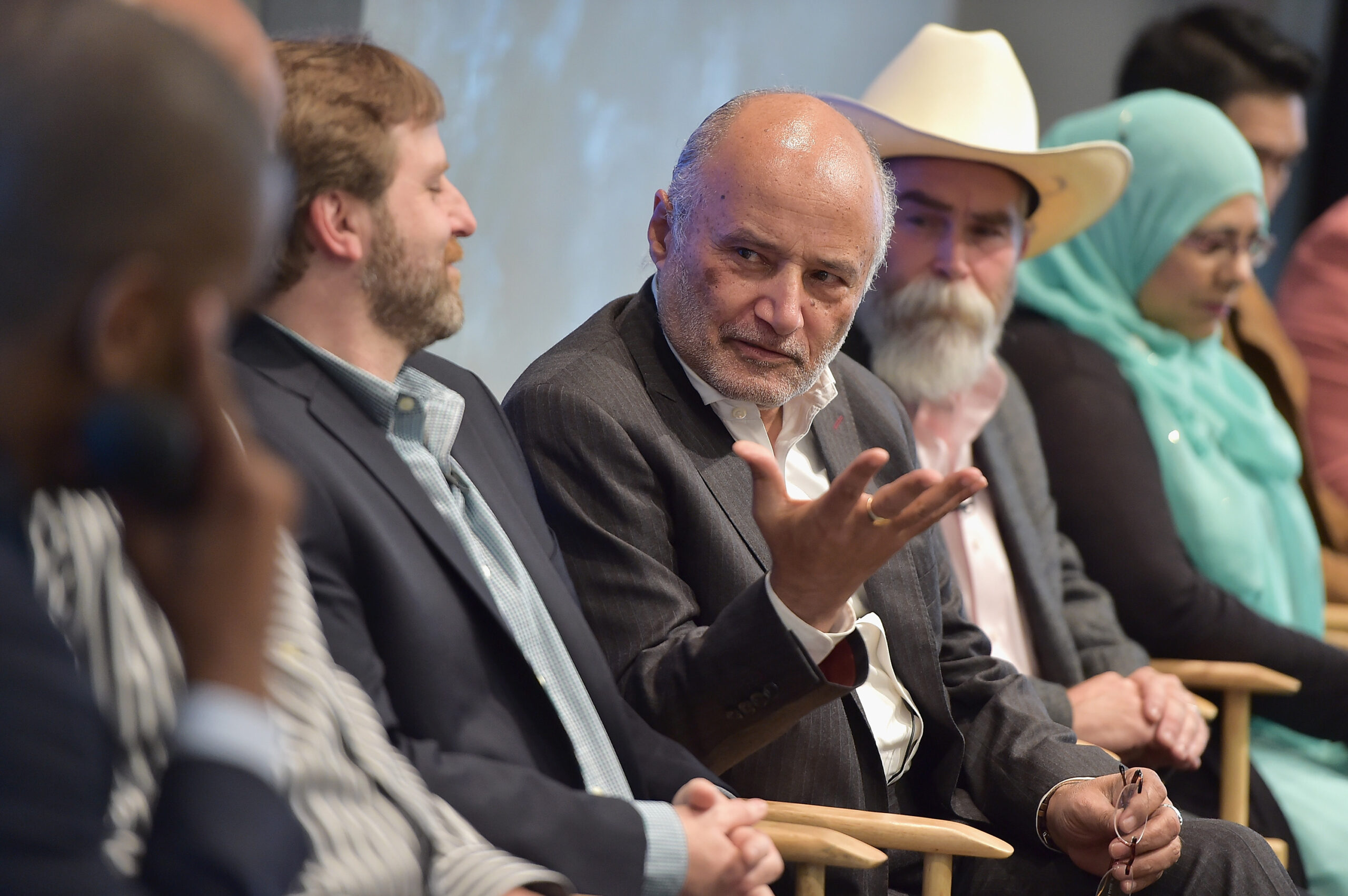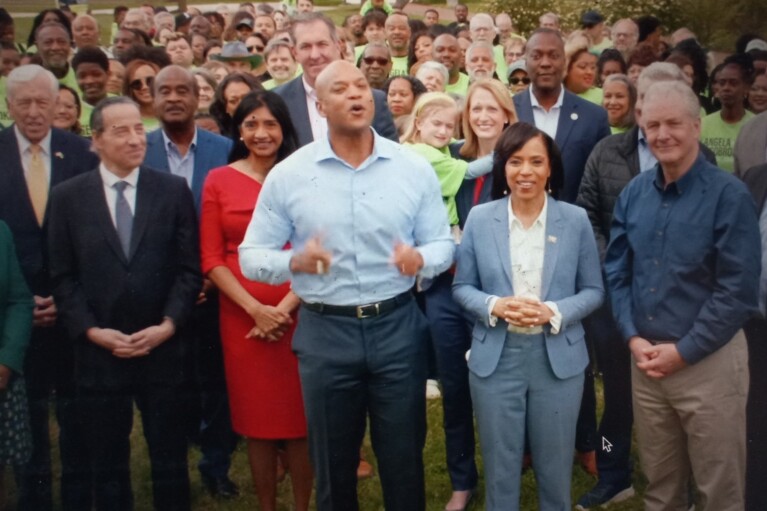Familiar fault lines in debate over judicial selection highlighted at public hearing

As a Maryland Judiciary workgroup heard from 20 witnesses during a more than three-hour-long public hearing in Annapolis Monday, testimony by two African-American female judges from neighboring counties underscored fault lines the panel is seeking to bridge as it considers recommendations to the General Assembly for changes in the state’s judicial selection process.
Charles County Circuit Court Judge Monise Brown, after winning a contested election earlier this month for a 15-year term, implored the workgroup to explore alternatives that would spare her and other circuit court judges from waging future political campaigns.
“The partisan election process is a decidedly imperfect vehicle for assessing the performance of a judge. The qualities we seek in a judge — neutrality, a respect for balancing the rights of all parties in the context of law, and promoting fairness and justice simply do not mix well with the requirements of an effective campaign.” Brown told the panel.
“I would be remiss if I did not urge you to consider another way, a way that does not expose judges to danger, put them at constant risk for ex parte communication, and distract them from the focus of their career — the daily duties of a judge,” Brown added, relating how — while campaigning door-to-door — she had on several occasions found herself face-to-face with individuals who had appeared before her in court. “It could have been very dangerous,” Brown said, pointing to the contentious nature of some of the cases she had adjudicated.
But another witness at the hearing, recently retired Prince George’s Circuit Court Judge Ingrid Turner, urged the panel — formally titled the Legislative Committee of the Maryland Judicial Council/Workgroup to Study Judicial Selection — to keep the current system of contested elections for circuit court judges in place.
“Yes, voters can elect a person some believe to be unqualified,” Turner acknowledged. “But the appointment process, whereby a small select group of hand-picked nominating committee members get to handpick individuals to forward to the governor, is more likely to reward the good ol’ boys network while decreasing transparency and, most importantly, diluting the Democratic process.”
She added, “While one might argue that the judicial nomination [commission] is best equipped to vet who sits on the bench, ensuring that we have a process that reflects the will of the people through their vote is ultimately the best way to ensure that Maryland has the public trust and confidence in the judiciary that is called to interpret the laws and administer justice fairly.”
Turner’s comments illustrated the decidedly different routes by which she and Brown reached the circuit court bench.
Operating within a system of vetting judicial appointees that has been in place for a half-century, Brown initially was appointed by Gov. Larry Hogan (R) earlier this year prior to having to face the voters for a full term. She was selected by the governor from a group of finalists forwarded to him by one of the network of trial court nominating commissions in operation around the state — and whose members also are chosen by the governor.
Turner, on the other hand, was an elected member of the Prince George’s County Council when, in 2016, she challenged and ousted a so-called sitting judge who had been appointed by the governor. As Turner noted during the hearing, her election was the first case of a candidate being elevated to the Prince George’s Circuit Court “without judicial selection committee support or a gubernatorial appointment in over 50 years.”
Preserving the electoral option that Turner utilized has long been seen by some as a fail-safe of sorts to ensure that minorities have a path to the circuit court — the only Maryland court to be subject to contested elections. District court judges are confirmed by the Maryland Senate to 10-year terms with no elections involved; appellate judges likewise receive Senate confirmation for 10-year terms, and face only a “yes or no” retention vote at the ballot box when their terms end.
As the workgroup mulls whether to recommend that the state get rid of the current system of circuit court elections — a move that would require a constitutional amendment subject to public referendum — it must grapple with how to assuage skeptics who fear that the diversity of the Maryland judiciary could suffer as a result.
One of the leading skeptics is a member of the current workgroup: prominent Baltimore attorney William “Billy” Murphy, himself elected to the Baltimore City Circuit Court four decades ago by challenging a sitting judge. At Monday’s hearing, Murphy repeatedly pressed witnesses who advocated for doing away with contested judicial elections as to how to ensure diversity on the bench if this option were eliminated.
Statistics collected by the workgroup show that, among 171 circuit court judges in office as of mid-October, 51 — or roughly 30% — were Black, a percentage on par with Maryland’s overall Black population of 31.5 percent. But Murphy pointed to past instances in which governors have been inattentive to such matters under the judicial nominating process.
Addressing Michael Pedone — Hogan’s legal counsel from 2020 until earlier this past July — Murphy asserted: “We have a long history in Maryland of governors not acting like you claim Gov. Hogan acted — and they haven’t appointed Republicans because they’re Democrats, they haven’t appointed women because they’re men, and they haven’t appointed Black people because they’re white.”
Murphy later pressed his point with another witness, retired Montgomery County Circuit Court Judge John Debelius, a former administrative judge for the judicial circuit that includes both Montgomery and Frederick counties.
“What protection do we have under the existing system if there is a governor who is prejudiced against women, Blacks, Latinos or gays skewing the system, so that those people don’t get the proper consideration they deserve?” Murphy asked.
Responded Debelius: “I don’t think the voting population in Maryland would tolerate or elect a governor who held those positions. There is certainly a disincentive for a governor not to appoint minorities if that that governor wants to be re-elected to office.”
Debelius acknowledged that “there was a time when it was very, very difficult, if not impossible, for minority lawyers to be appointed to the bench,” adding: “It’s an unfortunate part of our history [but] it’s not part of our recent history. I think what we’ve seen is that the nominating commissions have nominated many, many minorities and women to the bench and they’ve served with great honor and been excellent judges on the bench.”
But recent trial nominating commissions — and the process under which they have operated — came in for criticism at the hearing from both the NAACP and a bar association whose membership is comprised of African-American attorneys.
“The fact that there have only been three African Americans, no Hispanic Americans, no Native Americans, and no Asian Americans in the 300-plus year history of Anne Arundel County Circuit Court exemplifies the insidious glass ceiling created by the judicial nominating committee process,” said Claudia Barber, first vice president of the Anne Arundel NAACP, in a written statement to the workgroup.
Barber, who ran unsuccessfully for an Anne Arundel Circuit Court seat in 2016, contended, “My running in a contested judicial election…was the only reason there was a sudden interest to diversify the bench in 2018. From 2005-2017, the Anne Arundel County Trial Court Judicial Nominating Commission conveniently and purposely excluded every minority from its short list.”
This sparked protests on Annapolis’ Church Circle in 2017, she noted, adding: “Only then…did Gov. Hogan decide to appoint Judge Elizabeth Morris as the first African American female to the bench in its 368 year history.” Morris remains a judge on that court.
Vanita Taylor, executive officer of the Prince George’s County-based J. Franklyn Bourne Bar Association, told the hearing that her group is “very divided” on the wisdom of continued elections for circuit court judge.
While pointing to Turner and two other African-American women who have successfully challenged sitting judges in Prince George’s County in recent years, Taylor also cited instances — between 1996 and 2004 — in which three appointed Black judges lost election to white challengers in Anne Arundel, Baltimore and Howard counties in what she described as “ugly” campaigns. (One of them, Alexander Wright, was named to the Court of Special Appeals in 2007 after losing two bids for Baltimore County Circuit Court, and served until retiring in 2019.)
What members of the Bourne bar association are most concerned about, Taylor said, is the modus operandi of the nominating commissions charged with recommending candidates to the governor for appointment. “They feel as though the commissions are not as diverse as they should be, and that the commissions lack transparency,” she said, complaining that applicants for judgeships aren’t provided with an explanation if their names are not on the list of finalists forwarded to the governor for consideration.
“You don’t know why you weren’t sent forward,” Taylor said. “You don’t know if it’s political, you don’t know if it’s who you know.”
Del. Jon Cardin (D-Baltimore County), who has advocated doing away with judicial elections during four terms in the General Assembly, said the current nomination process “is certainly an opaque if not completely blacked out system right now…where there’s no transparency.”
Cardin, a member of the House Judiciary Committee, told the hearing, “I believe we can create more sunlight in the process so that we can understand why people are either deemed not qualified or highly qualified…and move ourselves to a place where our diversity is demonstrated on the bench in a very equitable way.”
He floated the idea of tying the composition of the list of finalists sent to the governor by a nominating commission to the overall demographic makeup of a given jurisdiction. “If there are a certain percentage of citizens from Baltimore County that are disabled or that are Asian or that are African American [and] if people apply from those areas and they are qualified, maybe there could be a formula that says they are required to be on the list,” Cardin suggested.
Addressing members of the workgroup, Cardin promised, “If this commission makes a suggestion that every jurisdiction should have a formula for diversity as part of the nomination process, I would be happy to do that as a way of getting rid of contested [judicial] elections.”
Earlier, Pedone — Hogan’s former counsel — defended the current process, while contending that it is fulfilling a role challenging for the average voter. “I believe the gubernatorial appointment process works,” he said, adding, “It is very difficult for an average person, who’s had very little interaction with the judicial system…to know how to pick a good judge.”
“It is nearly impossible for voters to make an informed decision about one candidate versus another. To do that, the voters would need to undertake the kind of vetting that the [judicial nominating commissions] do.”
Montgomery County Circuit Court Judge Kathleen Dumais, a co-chair of the workgroup, said at the conclusion of the hearing that greater public outreach and education are likely to be included in the panel’s final recommendations on the judicial selection process.
“…I think several of us around the table certainly agree that should be a component of any change we recommend,” said Dumais.
The workgroup, of which retired U.S., District Court Judge Alexander Williams is the other co-chair, is slated to meet again next Monday — the first of three scheduled meetings in the next several weeks aimed at producing at least an interim set of recommendations to send to the General Assembly in January.




 Creative Commons Attribution
Creative Commons Attribution